SBAS793A November 2019 – April 2020 DAC60502 , DAC70502 , DAC80502
PRODUCTION DATA.
- 1 Features
- 2 Applications
- 3 Description
- 4 Revision History
- 5 Device Comparison Table
- 6 Pin Configuration and Functions
-
7 Specifications
- 7.1 Absolute Maximum Ratings
- 7.2 ESD Ratings
- 7.3 Recommended Operating Conditions
- 7.4 Thermal Information
- 7.5 Electrical Characteristics
- 7.6 Timing Requirements : SPI Mode
- 7.7 Timing Requirements : I2C Standard Mode
- 7.8 Timing Requirements : I2C Fast Mode
- 7.9 Timing Requirements : I2C Fast-Mode Plus
- 7.10 Typical Characteristics
-
8 Detailed Description
- 8.1 Overview
- 8.2 Functional Block Diagram
- 8.3 Feature Description
- 8.4 Device Functional Modes
- 8.5 Programming
- 8.6
Register Maps
- 8.6.1
Registers
- 8.6.1.1 NOOP Register (offset = 0h) [reset = 0000h]
- 8.6.1.2 DEVID Register (offset = 1h) [reset = 0214h for DAC80502, 1214h for DAC70502, 2214h for DAC60502]
- 8.6.1.3 SYNC Register (offset = 2h) [reset = 0300h]
- 8.6.1.4 CONFIG Register (offset = 3h) [reset = 0000h]
- 8.6.1.5 GAIN Register (offset = 4h) [reset = 0003h]
- 8.6.1.6 TRIGGER Register (offset = 5h) [reset = 0000h]
- 8.6.1.7 BRDCAST Register (offset = 6h) [reset = 0000h for RSTSEL = 0, or reset = 8000h for RSTSEL = 1]
- 8.6.1.8 STATUS Register (offset = 7h) [reset = 0000h]
- 8.6.1.9 DAC-n Register (offset = 8h–9h) [reset = 0000h for RSTSEL = 0, or reset = 8000h for RSTSEL = 1]
- 8.6.1
Registers
- 9 Application and Implementation
- 10Power Supply Recommendations
- 11Layout
- 12Device and Documentation Support
- 13Mechanical, Packaging, and Orderable Information
Package Options
Mechanical Data (Package|Pins)
- DRX|10
Thermal pad, mechanical data (Package|Pins)
Orderable Information
7.10 Typical Characteristics
at TA = 25°C, VDD = 5.5 V, internal reference = 2.5 V, REF-DIV = 0 and BUFF-GAIN = 1, channel A shown, and DAC outputs unloaded (unless otherwise noted)




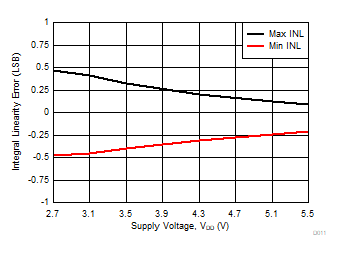
| REF-DIV = 0 and BUFF-GAIN = 0 |




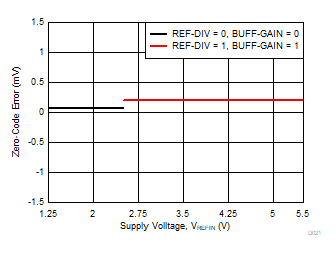
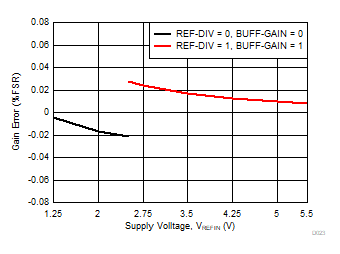


| DAC code at midscale |

| External reference = 2.5 V, REF-DIV = 1 and BUFF-GAIN = 0 |

| REF-DIV = 0 and BUFF-GAIN = 0 |

| REF-DIV = 1 and BUFF-GAIN = 0 | ||

| DAC code transition from midscale to midscale – 1 LSB, | ||
| REF-DIV = 0 and BUFF-GAIN = 0 |

| REF-DIV = 0 and BUFF-GAIN = 0 |
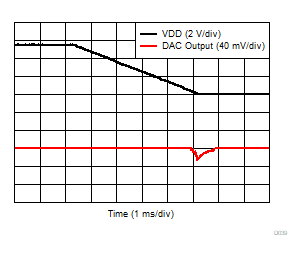
| REF-DIV = 0 and BUFF-GAIN = 0 | ||

| fo = 1 kHz, fs = 400 kHz, includes 7 harmonics, | ||
| measurement bandwidth = 20 kHz, external reference = 2.5 V, | ||
| REF-DIV = 0 and BUFF-GAIN = 0 |

| DAC code at midscale, external reference = 2.5 V, | ||
| REF-DIV = 0 and BUFF-GAIN = 0 |

| SCLK = 1 MHz, DAC code at midscale, external reference = 2.5 V, | ||
| REF-DIV = 0 and BUFF-GAIN = 0 |

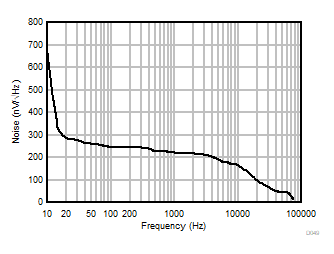


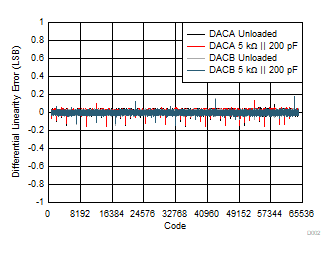

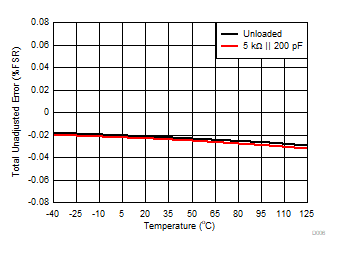



| REF-DIV = 0 and BUFF-GAIN = 0 |







| DAC code at midscale |

| REF-DIV = 0 and BUFF-GAIN = 0 |

| External reference = 2.5 V |

| REF-DIV = 0 and BUFF-GAIN = 1 |

| DAC code transition from midscale – 1 to midscale LSB, | ||
| REF-DIV = 0 and BUFF-GAIN = 0 |

| REF-DIV = 0 and BUFF-GAIN = 0 | ||

| REF-DIV = 0 and BUFF-GAIN = 0 |

| DAC code at midscale, VDD = 5.0 V + 0.2 VPP, | ||
| REF-DIV = 0 and BUFF-GAIN = 0 |

| Gain = 1X (REF-DIV = 1 and BUFF-GAIN = 1), | ||
| external reference = 2.5 V, | ||
| REF-DIV = 0 and BUFF-GAIN = 0 |

| DAC code at midscale, internal reference = 2.5 V, | ||
| REF-DIV = 0 and BUFF-GAIN = 0 |

| 30 units | ||
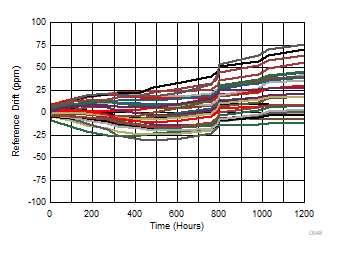
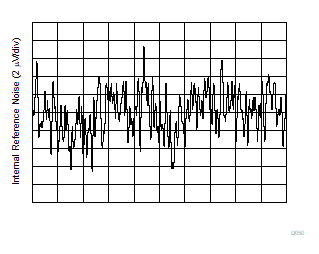

(Pre- and Post-Solder) Histogram